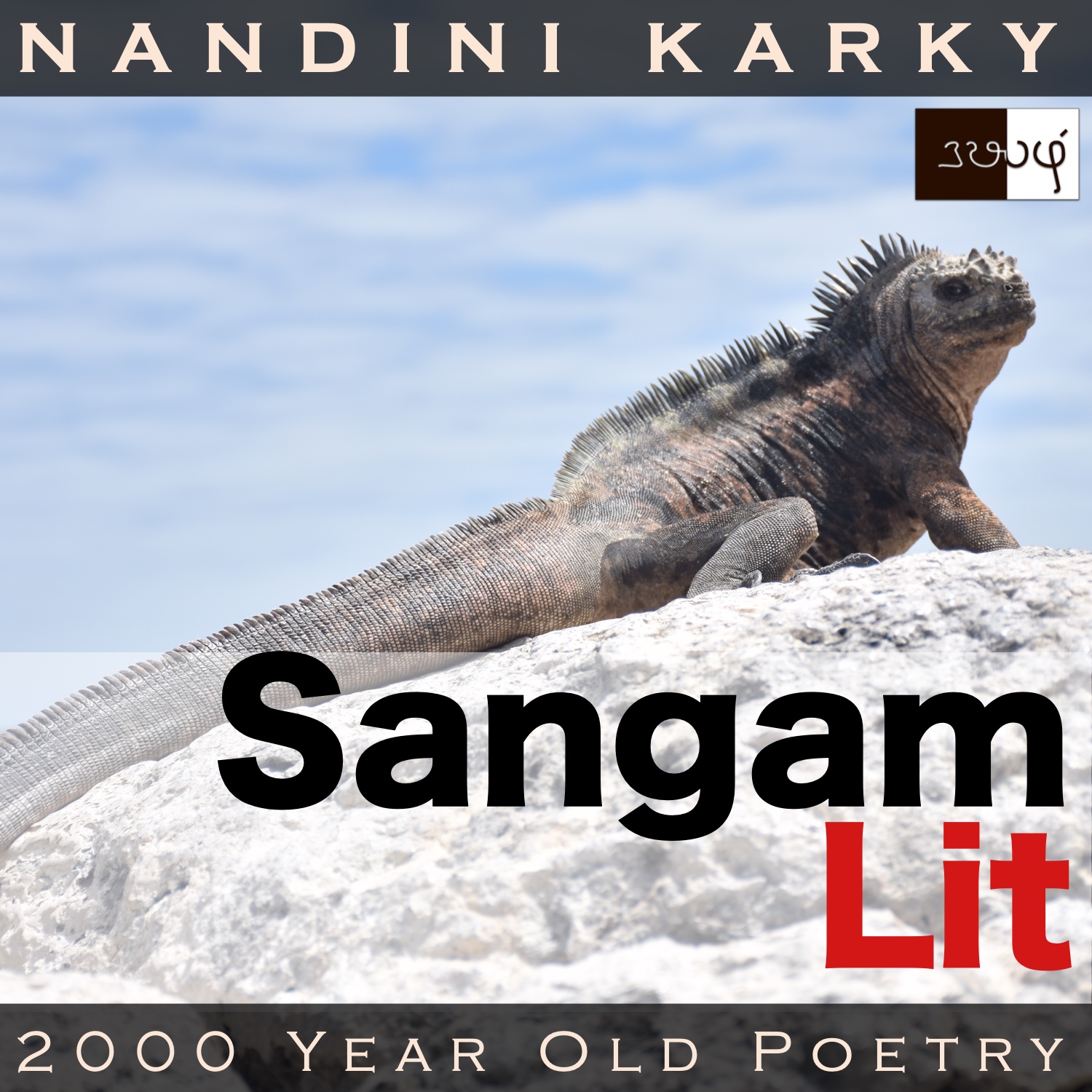Podcast: Play in new window | Download
Subscribe: Apple Podcasts | Spotify | Amazon Music | Android | iHeartRadio | TuneIn | RSS | More

In this episode, we perceive a distinctive technique of registering dissent, as depicted in Sangam Literary work, Kurunthogai 140, penned by Alloor Nanmullaiyaar. Set in the drylands of ‘Paalai’, the verse speaks in the voice of the lady to the confidante, in response to her friend’s comment about bearing with the man’s separation.
வேதின வெரிநின் ஓதி முது போத்து,
ஆறு செல் மாக்கள் புள் கொள, பொருந்தும்
சுரனே சென்றனர், காதலர்; உரன் அழிந்து,
ஈங்கு யான் அழுங்கிய எவ்வம்
யாங்கு அறிந்தன்று-இவ் அழுங்கல் ஊரே?
‘Pain of separation’ is the single thread in this verse. In the opening line ‘வேதின வெரிநின் ஓதி முது போத்து’ meaning ‘a saw-backed old male chameleon’, an apt simile is densely packed. From the world outside, the focus turns within in ‘உரன் அழிந்து’ meaning ‘strength ruined’ and ‘அழுங்கிய எவ்வம்’ meaning ‘hidden suffering’. Ending with the words ‘யாங்கு அறிந்தன்று-இவ் அழுங்கல் ஊரே’ meaning ‘how did it know – this uproarious town?’, the verse intrigues our curiosity.
What does the town know and why does the lady sound surprised? The context reveals that the man and lady were leading a love relationship when the man had to part away to gather wealth. The lady languished in his absence and her confidante scolds her for not bearing with his separation. To the confidante, the lady says, “An old male chameleon with a saw-like back stays on the path to serve as the omen for wayfarers in the drylands, and thither, went my lover. My strength ruined, I sealed my suffering within. How come this tumultuous town has realised it now?” With these words, the lady indirectly conveys the insensitivity of her confidante, with regard to her own state.
Insensitive confidante? That’s almost an oxymoron! Let’s delve into what hides in the lady’s mind. She starts by describing a scene in the drylands, where the man might be traversing at the very moment by pointing to an old male chameleon lying still on the path. To describe this chameleon vividly, she places its back in parallel to a saw. When we zoom on to the spikes of a chameleon called as the ‘dorsal crests’, the aptness of its connection to the serrated ridges of a saw cannot fail to impress us. Consider how familiar this Sangam poet must be with both an animal in the wild and an industrial tool such as a saw to see this connection between vastly different domains. Returning to the verse, the lady informs us that people who walk on those paths treat the chameleon as a good omen for their endeavours. It reminds me of superstitions European sailors in the eighteenth century were said to have, such as touching a horseshoe and spitting before commencing a sail. What is it about travel in the past that makes people rely on these bizarre superstitions? One thing is certain – these journeys must have been fraught with danger and so, perhaps people then held on to whatever they could.
Returning from our meanderings, we find the lady now talking about how when the man parted, she lost her strength and she was hiding her suffering all this while. She turns to her friend and asks, how come their slanderous town had come to realise her angst just now? In truth, the lady is projecting her message to the confidante on the town. What she means to convey is that the confidante did nothing to stop the man’s travel, knowing fully well it would break the lady and so, why was she talking about how the lady should bear with his separation. In a nutshell, the lady is telling her friend, you didn’t do anything about it then, so why talk now? Perhaps, the lady would find some relief in conveying her feelings and the confidante would be gentler in her support to the lady. Aspects like worry about parting, a confidante’s power in stopping another’s travel and a lady’s helplessness seem alien to us but they do open a window to the concerns and culture two thousand years ago.




Share your thoughts...